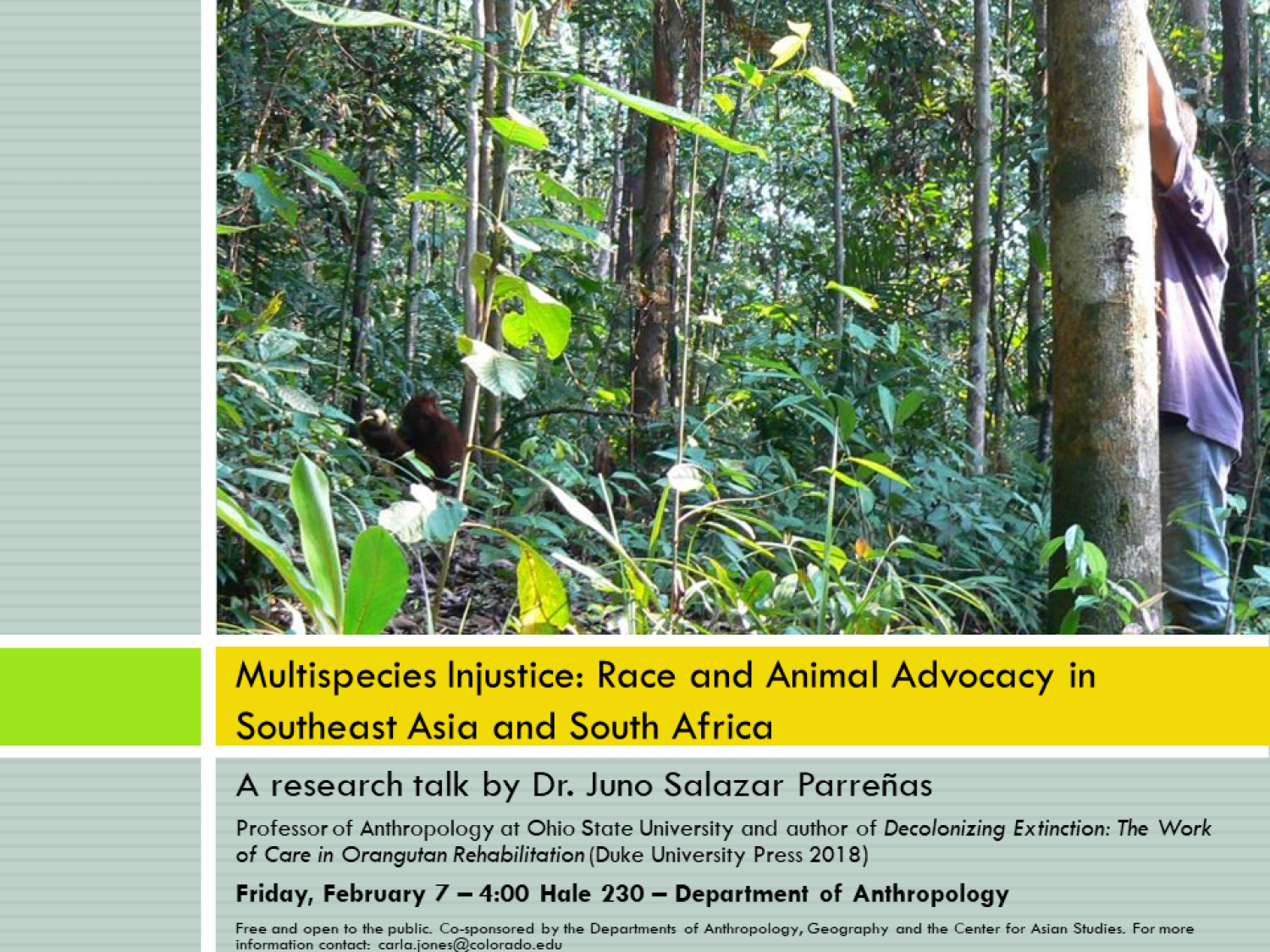Public Events Spring 2020
Spring 2020
Cancelled
THE ÑUIÑE SCRIPT: Writing and Society in northwestern Oaxaca (1600-1200 b.p.)
Dr. Javier Urcid, Brandeis University
5pm,Thursday, April 2 in Hale 230
The Mesoamerican Ñuiñe script appears to have been a semasiographic and logo-phonic system used by multi-linguistic and pluri-ethnic elites to assert or contest membership in corporate groups that owned the means of production, including land, labor, and access to high-ranking political and religious offices. Most of the known inscriptions are emblematic and synecdochical representations of named individuals and their genealogical tracings. The script was partly coeval with the neighboring Zapotec and Central Mexican writing traditions, and evinces a complex process of scribal borrowing and lending with other Oaxacan, Teotihuacan, and Post-Teotihuacan scripts. It illustrates an alternative path in script development unrelated to uni-lineal, teleological transformations from “picture writing” to an “alphabet.”
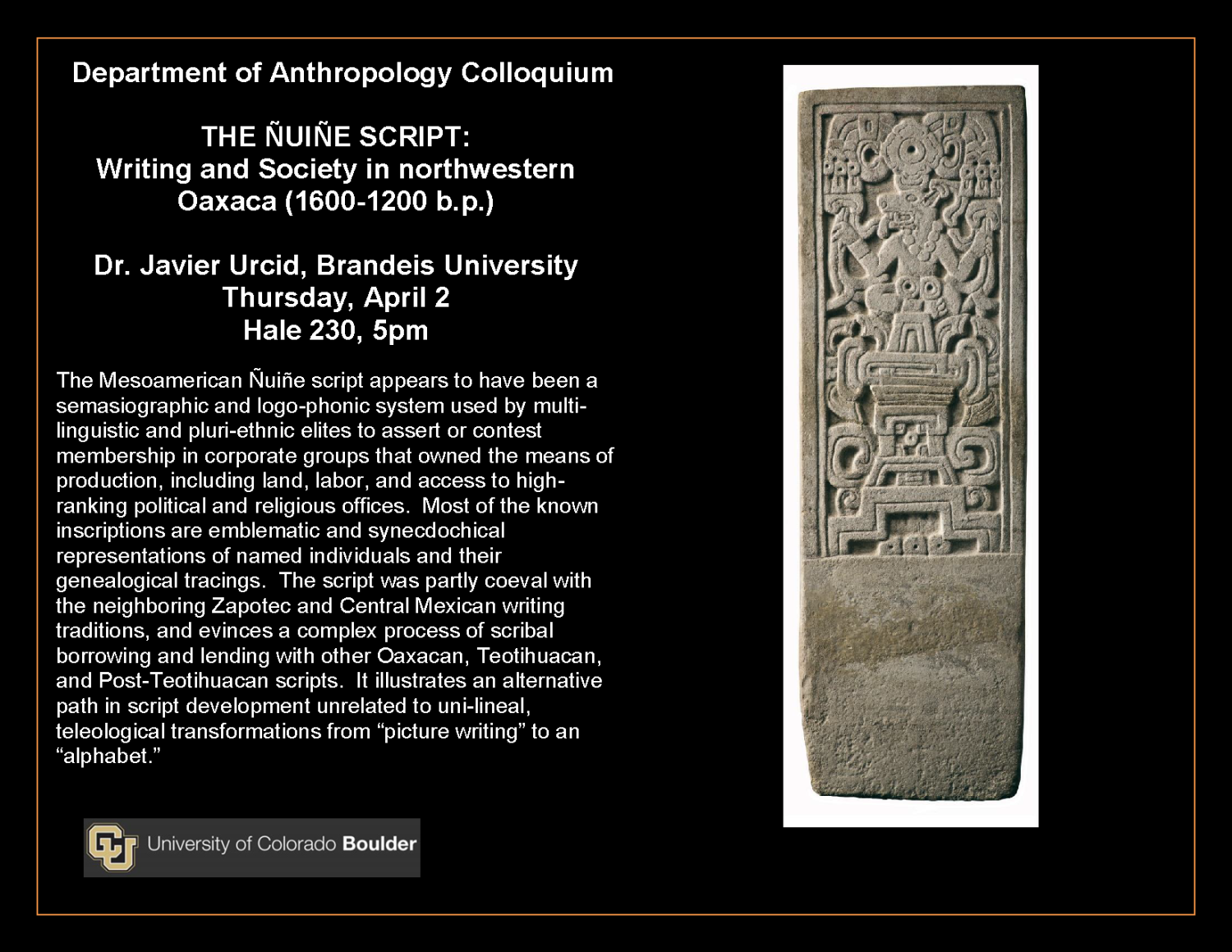
2020 Distinguished Lecture in Cultural Anthropology
Cancelled
Shaping a Mystery: Artisans and Ancestors in India’s Ellora Caves
Kirin Narayan, Professor of Anthropology, The Australian National University
4pm, Thursday, March 12 Paleontology Hall, (Museum of Natural History)
Ellora, Western India, is a World Heritage Site with thirty-four magnificent Hindu, Buddhist and Jain temple-caves excavated and sculpted from the mountain’s rock. Ellora Cave 10, a 7th-century Buddhist chaitya hall, or shrine, features a towering seated Buddha sculpted with hands in the dharmachakra mudra (or “teaching pose”). This cave has also long been known to locals, pilgrims and art historians as the “Vishwakarma Cave” or the “Carpenters’ Hut.” Why is this so? The deity Vishwakarma, “Maker of the Universe,” is usually depicted with tools, and is considered the divine ancestor of artisan communities and protective patron of industrial workers in many regions of India. I build on contemporary ethnographic research on Vishwakarma worship, historical accounts of Ellora, and an elaborate mythology featuring Vishwakarma’s presence on the sacred Ellora mountain, using the prism of Cave 10 to recuperate artisans’ perspectives on making and the provocations of mystery.
Open to the public. Sponsored by the Department of Anthropology, the Center for the Humanities and Arts, and the Center for Asian Studies.
For more information, contact carla.jones@colorado.edu
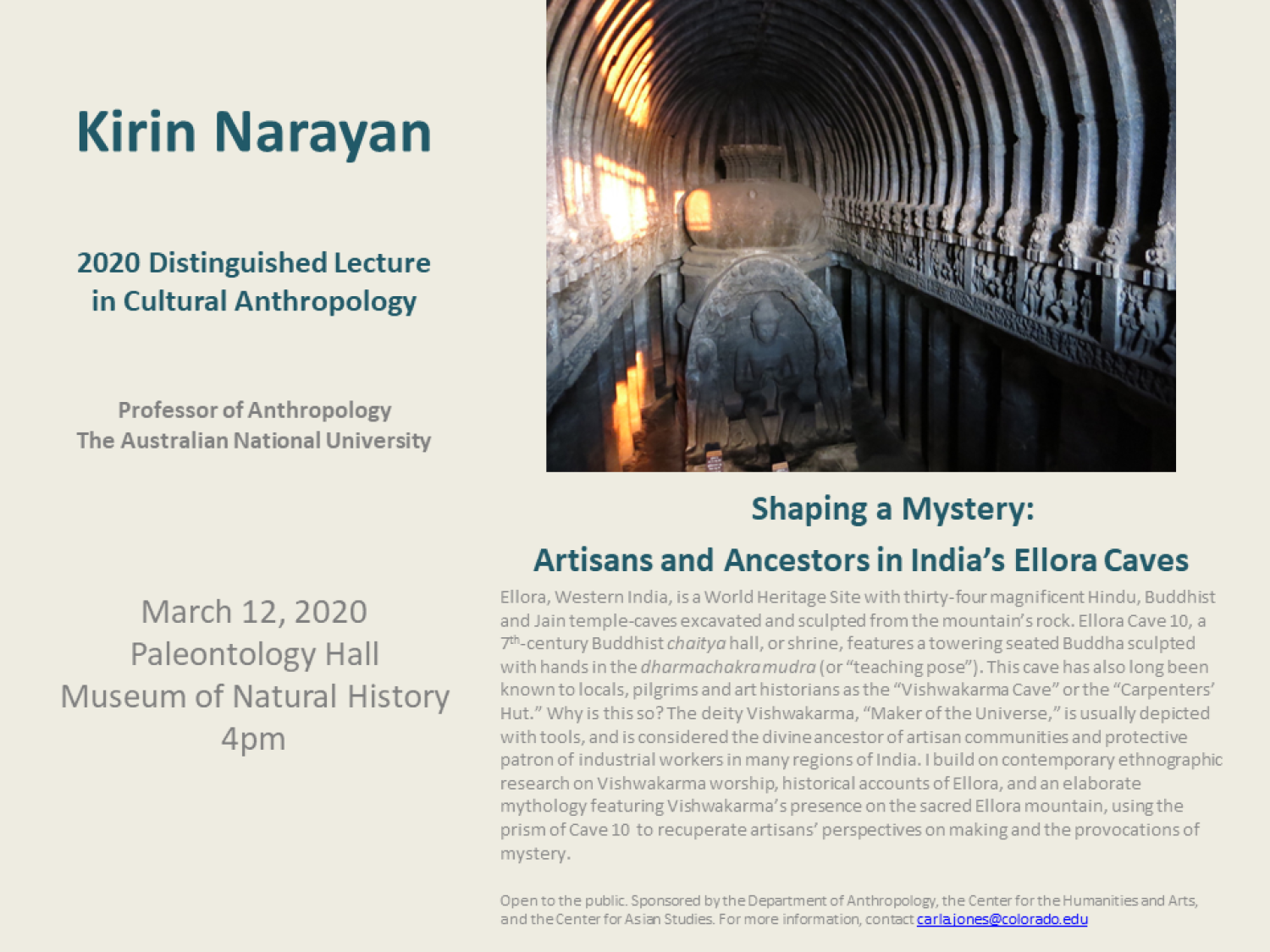
2020 Distinguished Lecture in Cultural Anthropology
Cancelled
"When Work is Worship: Technology, Labor and the Figure of Vishwakarma—'Maker of the Universe,’”
Kenneth George, Professor of Anthropology, The Australian National University
4pm, Friday, March 13 in Hale 230
Although Vishwakarma worship in India has long been associated with hereditary artisan castes and their hand tools, Vishwakarma’s presence has moved beyond craft workshops and into workplaces associated with the country’s infrastructural systems and networks: factories, engineering schools, design studios, public works departments, and industrial parks. The increasingly public visibility of Vishwakarma worship across India since 1900 shows unmistakable ties to the rise of industrial capitalism in that country and to promulgating an ethos of technological skill and craftsmanship among the broad workforce. In this context, the figure of Vishwakarma is part of an ethical armature for contemporary techno-economic systems. Meanwhile, this god has figured, too, in over a century of scholarly works that have set him apart from the predations and perils of industrial capitalism. The aim of this paper is to rethink the historical and socio-theological warrant for the god’s techno-ideological location in disciplinary literatures, in shrines, and on the factory floor.
Open to the public. Sponsored by the Department of Anthropology, the Center for the Humanities and Arts, and the Center for Asian Studies.
For more information, contact carla.jones@colorado.edu
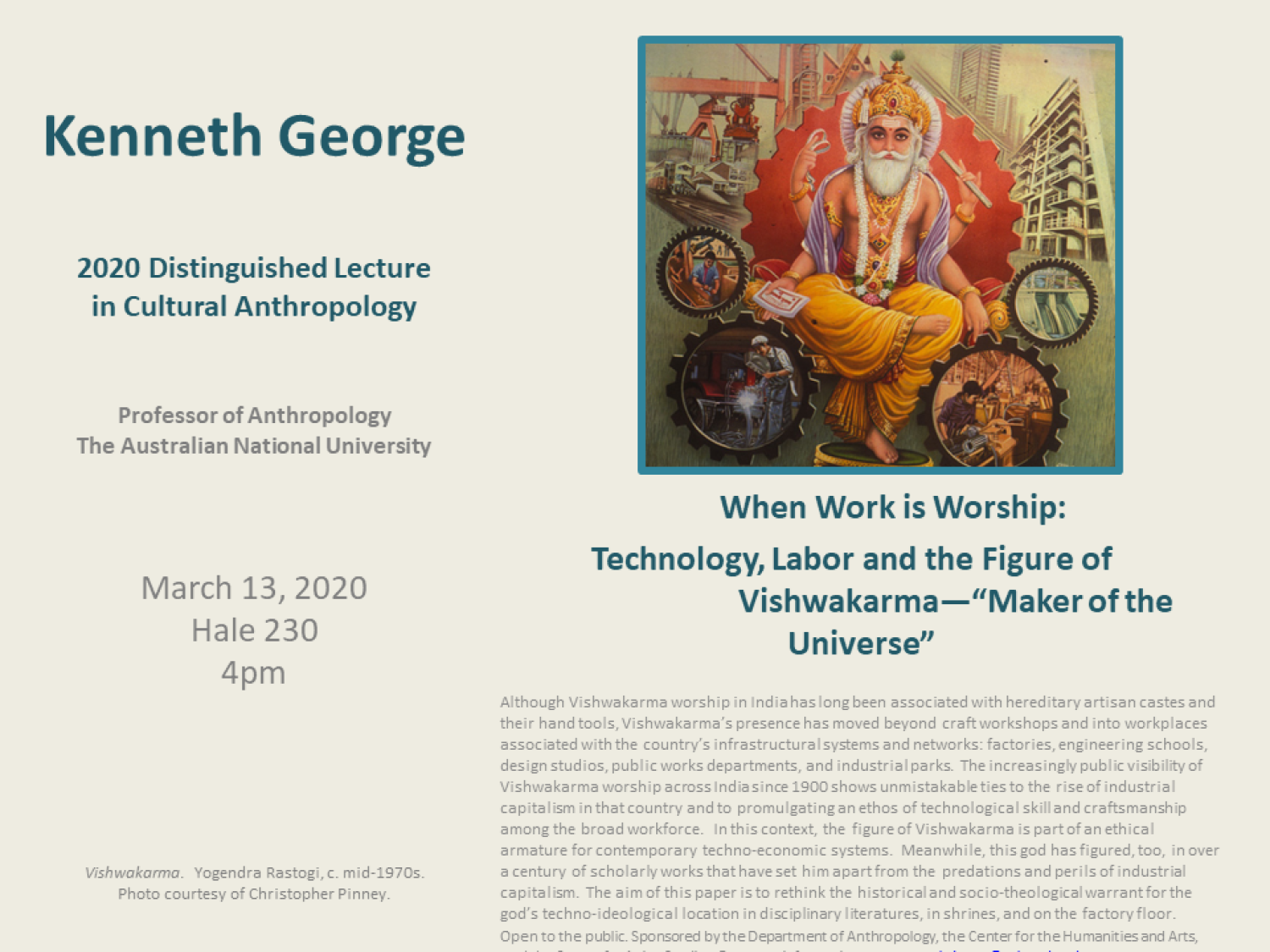
Inferring whether a taxon was truly absent from a site or has not been sampled yet: applications to Paranthropus
Dr. Andrew Du, Department of Anthropology and Geography, Colorado State University
4pm,Friday, February 28 in Hale 230
Knowing how a fossil taxon is distributed across space and through time is important for understanding its biogeographic history, habitat preference, and evolutionary relationships. While a taxon's presence at a site can be proven by the discovery of at least one specimen, demonstrating absence is much more difficult given that an observed absence is consistent with two mutually exclusive outcomes: (1) the taxon never occupied the site, or (2) the taxon did occupy the site but has not been sampled yet. For my talk, I first examine the inferential and analytical challenges this problem poses. I then discuss my model for estimating the probability that a taxon was truly absent from a site given that a certain number of other specimens have been recovered there. I conclude by applying this model to the hominin genus Paranthropus in eastern Africa. Not only does this method provide a clearer picture of which sites Paranthropus did and did not occupy, it also quantifies the number of recovered specimens needed to achieve a certain level of confidence that Paranthropus was truly absent from a given site.
For more information contact: christina.ryder@colorado.edu
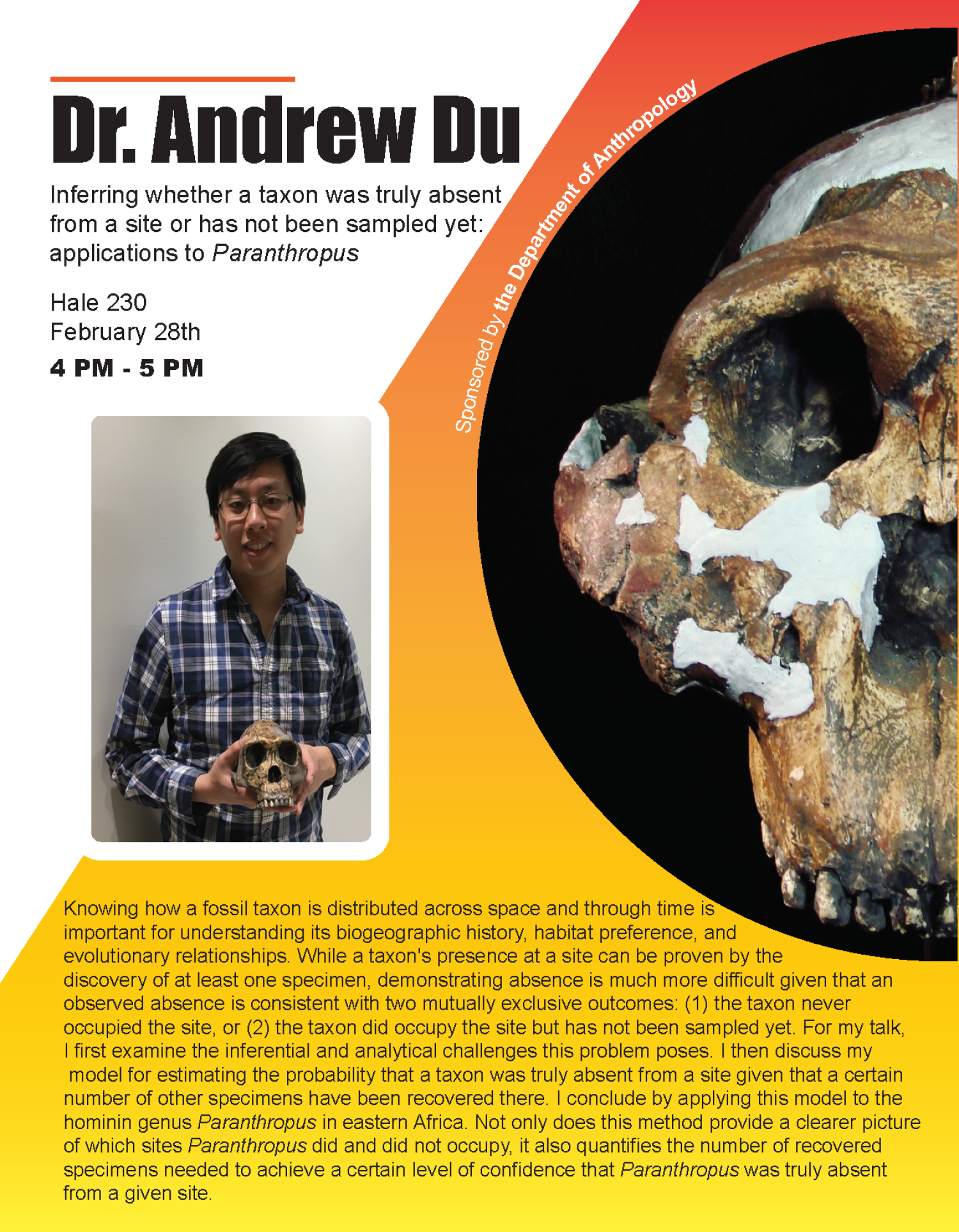
Reconstructing Concepts from Archaeological Remains
Rob Wiseman, University of Cambridge Archaeological Unit
5pm,Thursday, February 27 in Hale 230
Archaeologists have long regarded abstract concepts as difficult —maybe even impossible —to reconstruct from the archaeological record. However, in recent decades, developments in cognitive science have produced new ideas about what concepts are and how they form in the human brain. These give archaeologists new tools to reconstruct many concepts which were important in past societies.
In this talk, Rob will outline some of the new methods available to archaeologists and anthropologists, as well as present results from his own research. These include reconstructions of kinship structures, political concepts, and beliefs about the dead—all from the material record. (And along the way, he might also discuss concepts of love, time, control, the cosmos, and more…)
Rob is a member of the Cambridge Archaeological Unit and the MacDonald Institute for Archaeological Research, University of Cambridge.
For more information contact: scott.ortman@colorado.edu
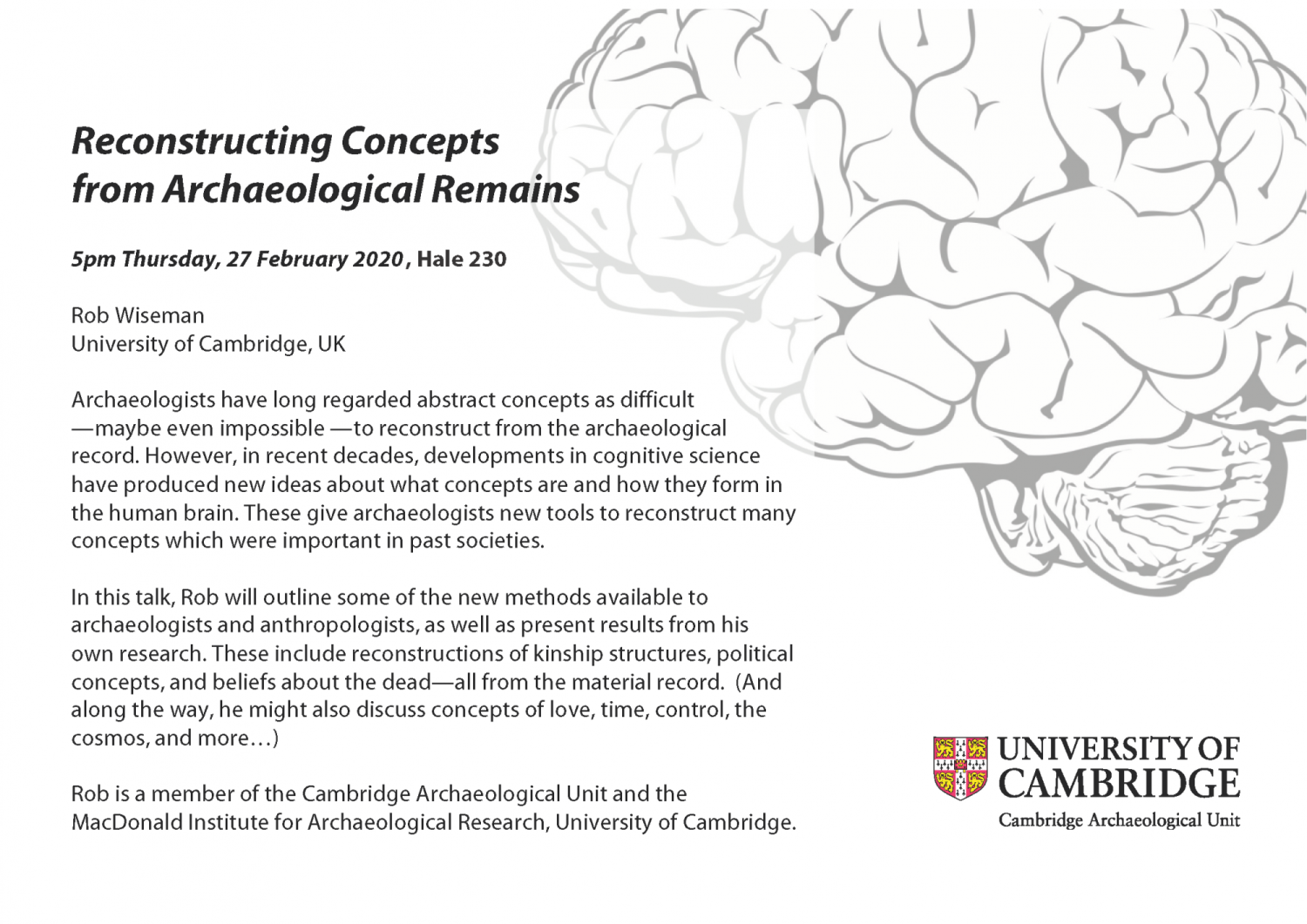
Multispecies Injustice: Race and Animal Advocacy in Southeast Asia and South Africa
Dr. Juno Salazar Parreñas, Professor of Anthropology at Ohio State University
4pm, Friday, February 7 in Hale 230
Articulations of human rights and animal rights have insufficiently engaged the dire challenges of biodiversity loss, species extinction, and climate change. Instead of situating environmentalism and animal advocacy in the language of liberalism through rights-bearing citizens and wards, this paper argues for a broader sense of justice, one that recognizes the shared plight of human and animal subjects while also critiquing the material conditions of ongoing colonialism. This paper draws from ethnographic research in Sarawak (present-day Malaysia) and preliminary research in South Africa to compare the welfare of displaced orangutans on Borneo, ex-circus lions in southern Africa, and the people who work to enable the survival of such critically endangered and vulnerable lives.
Free and open to the public. Co-sponsored by the Departments of Anthropology, Geography and the Center for Asian Studies.
For more information contact: carla.jones@colorado.edu
